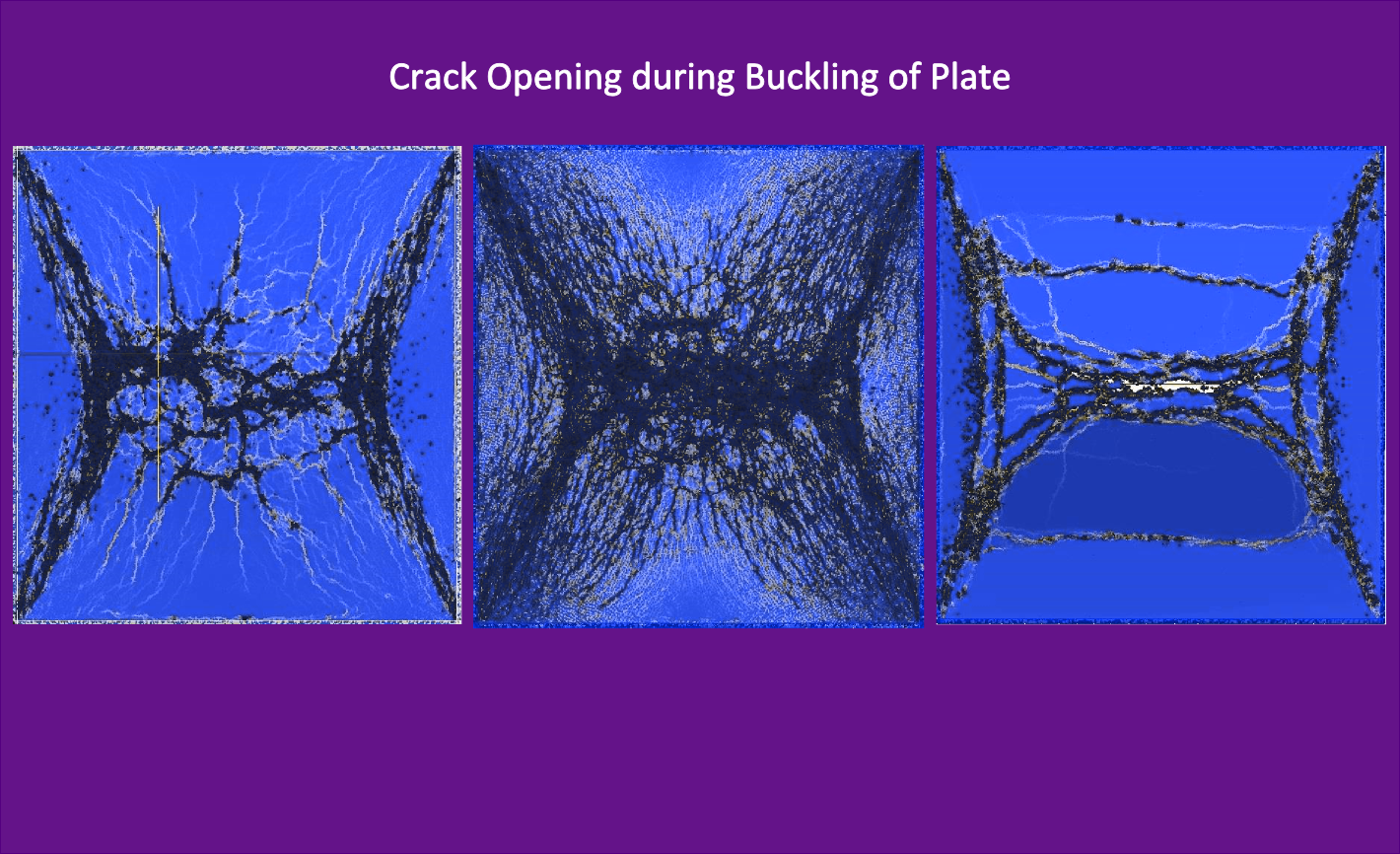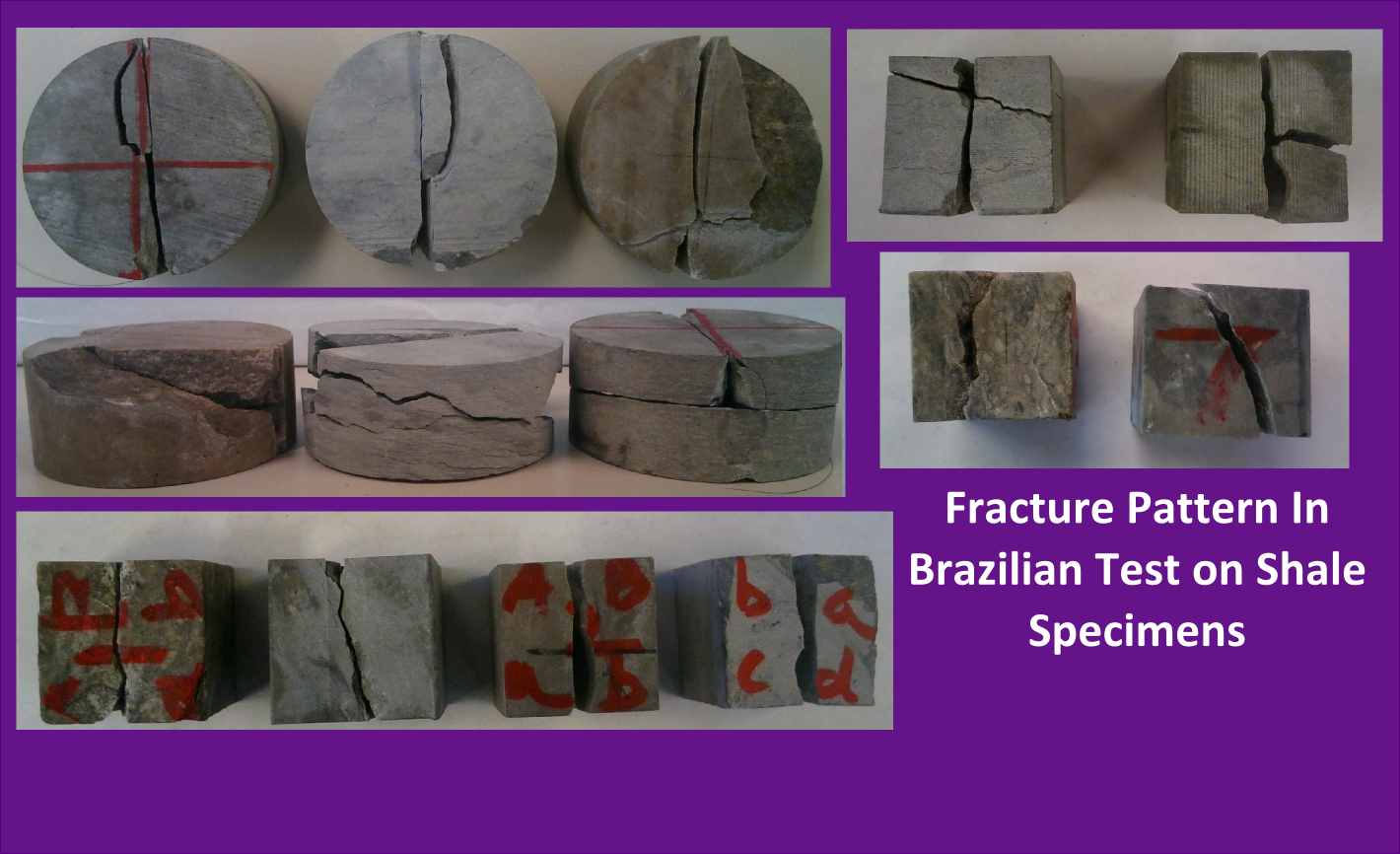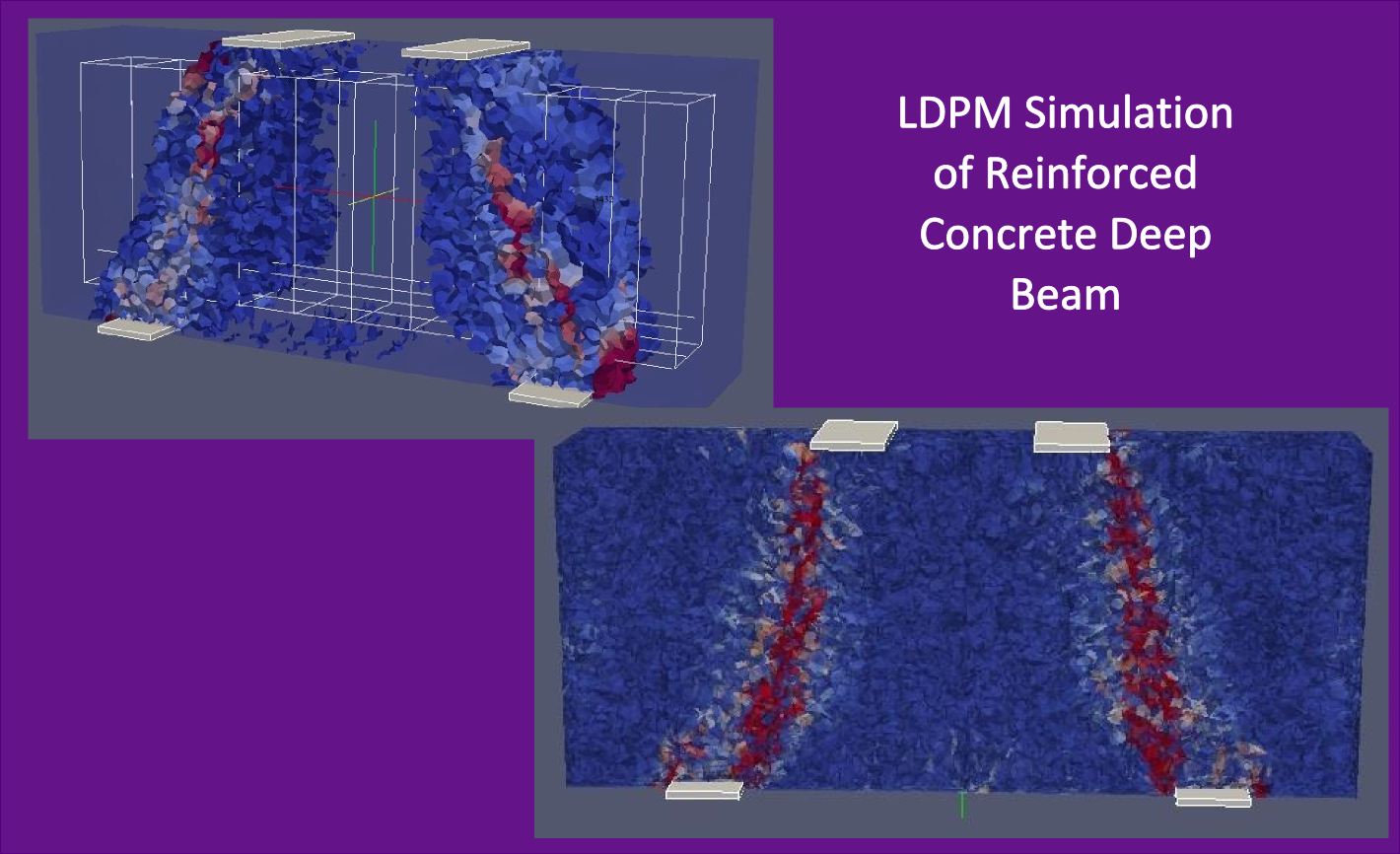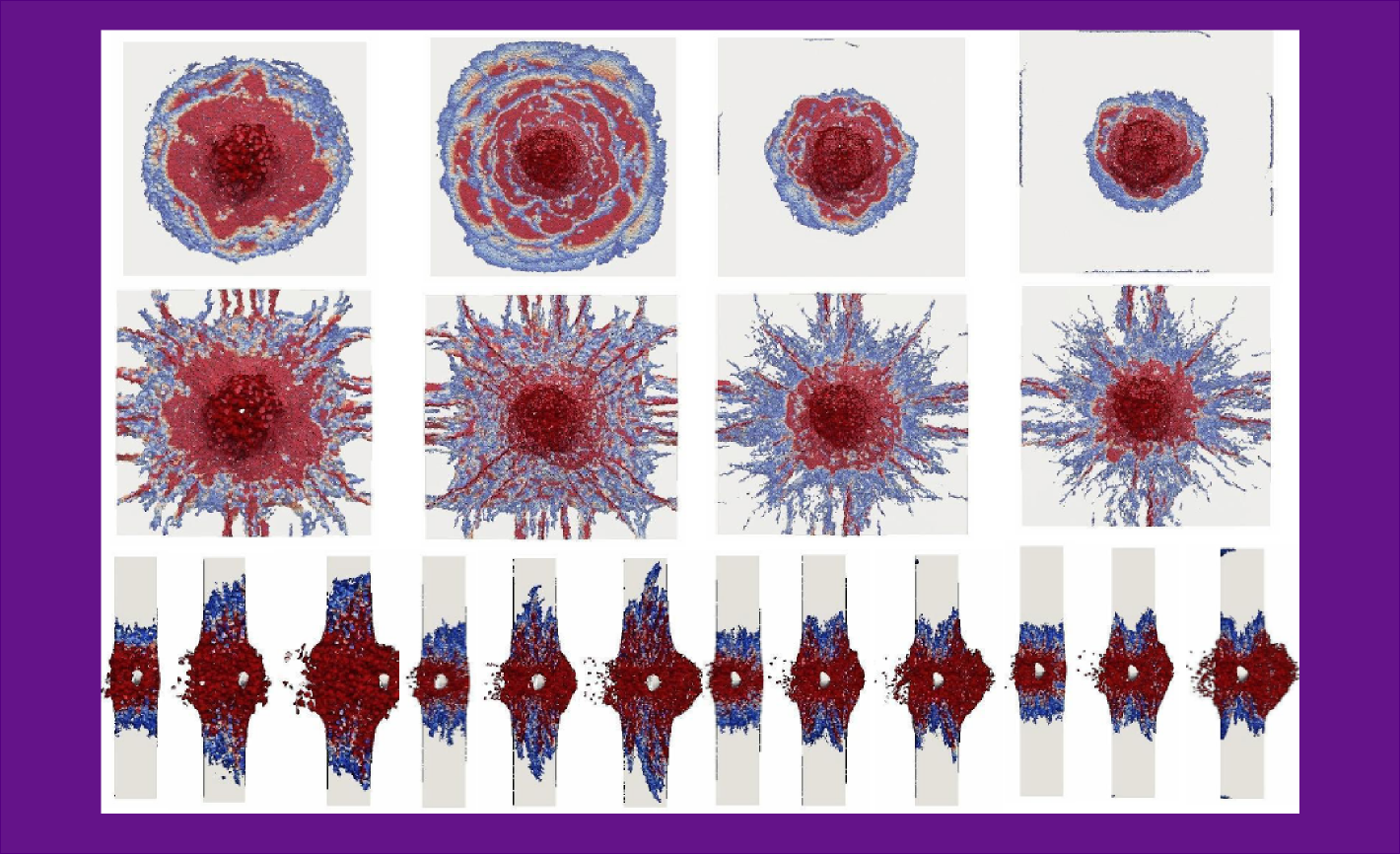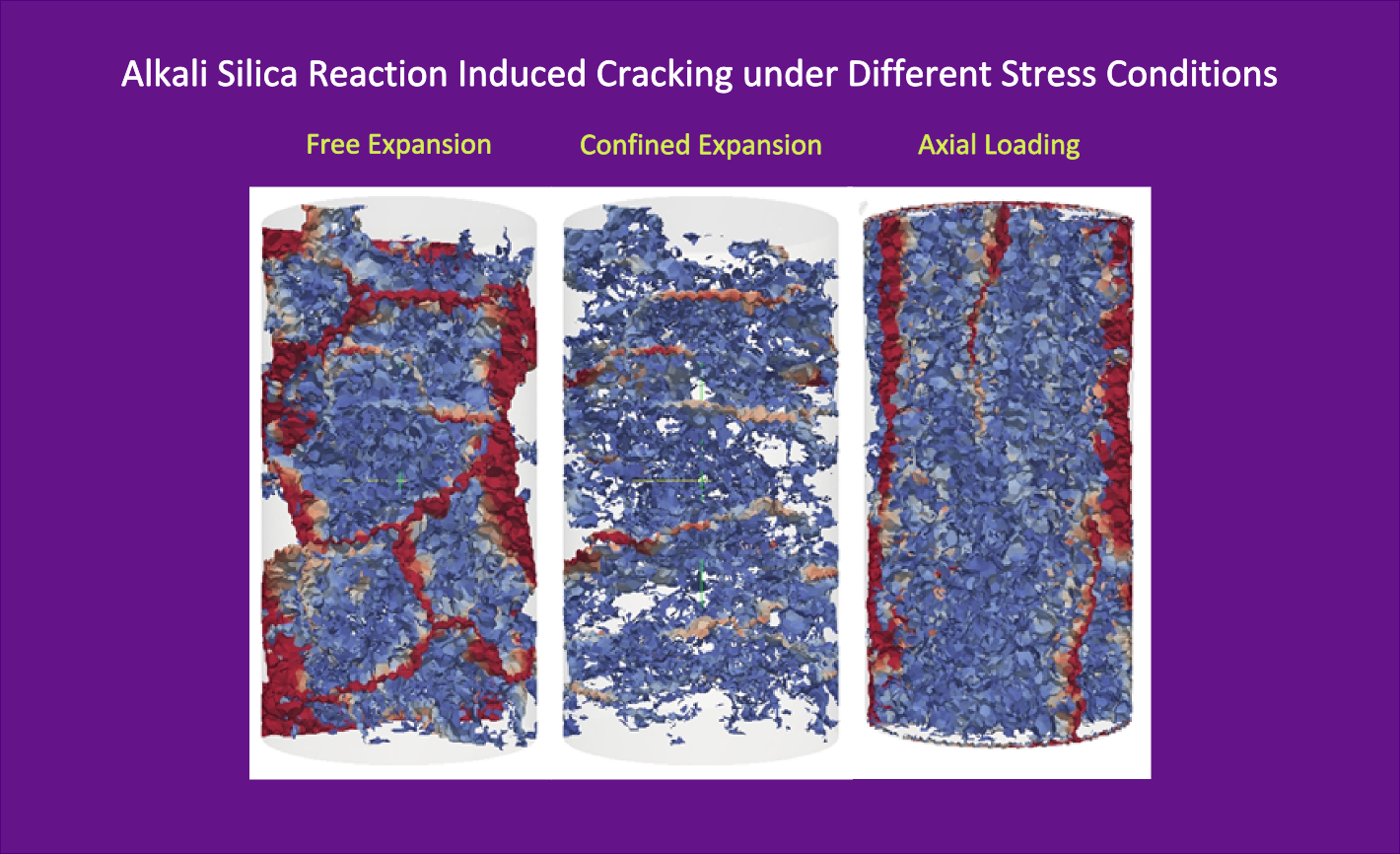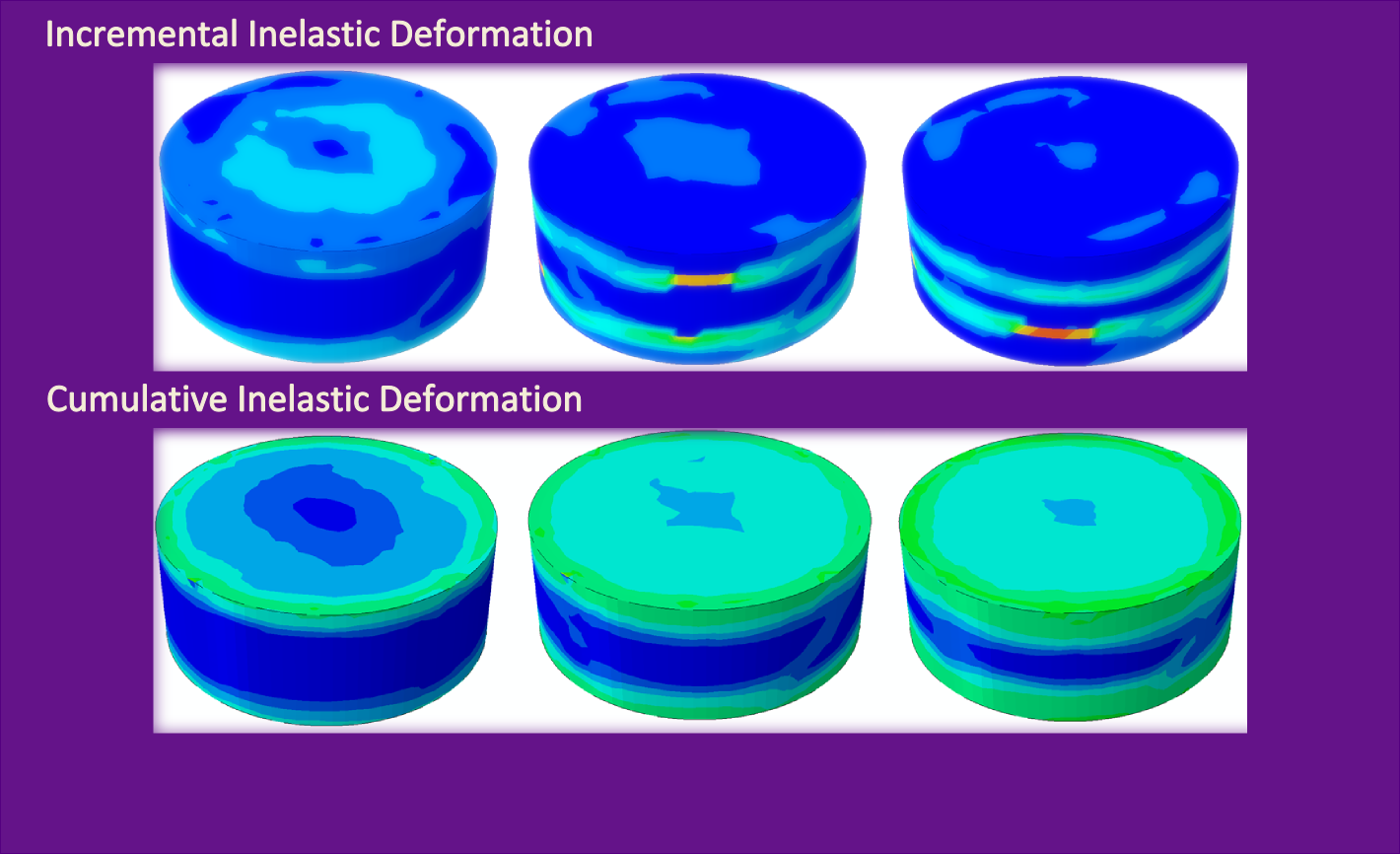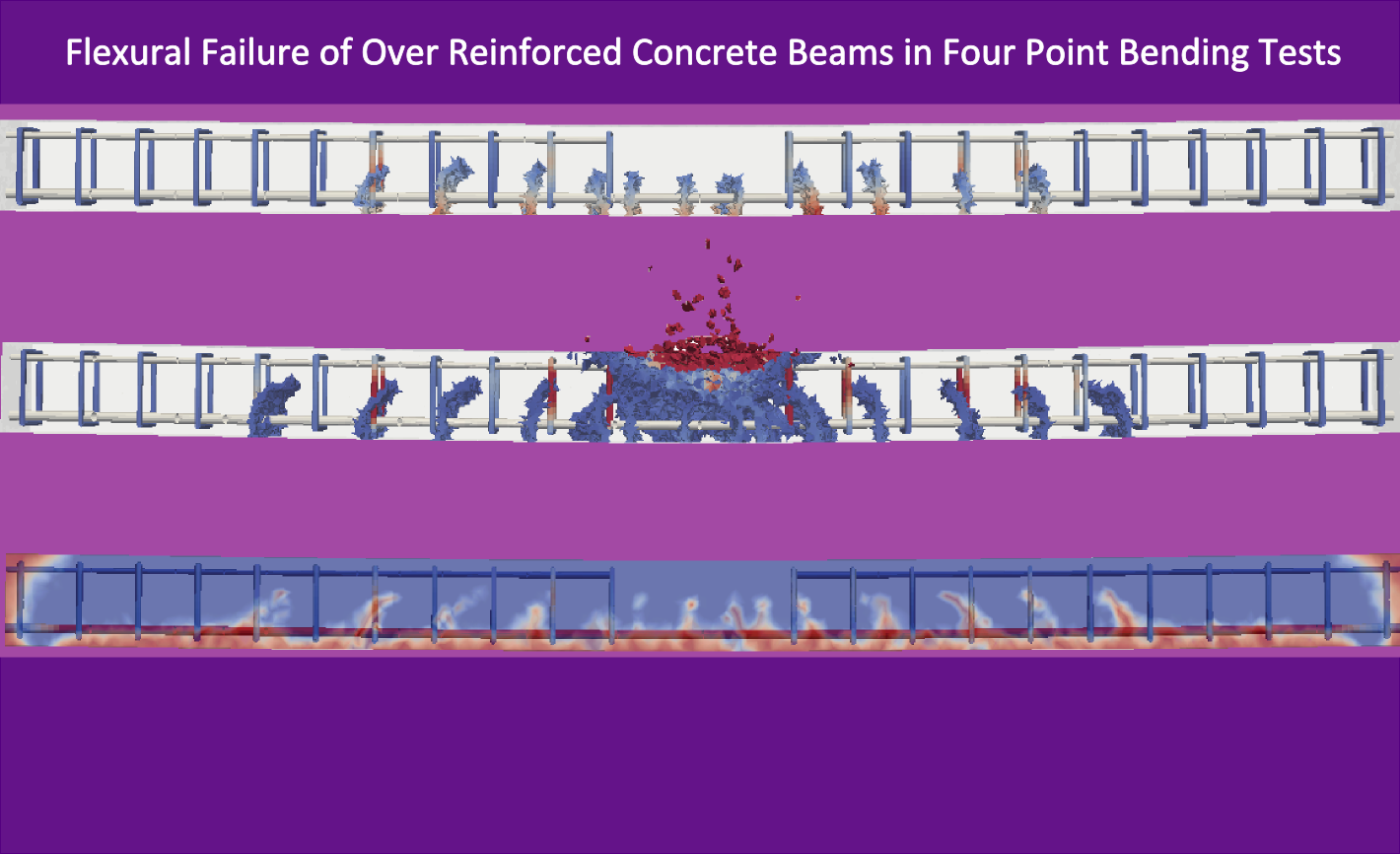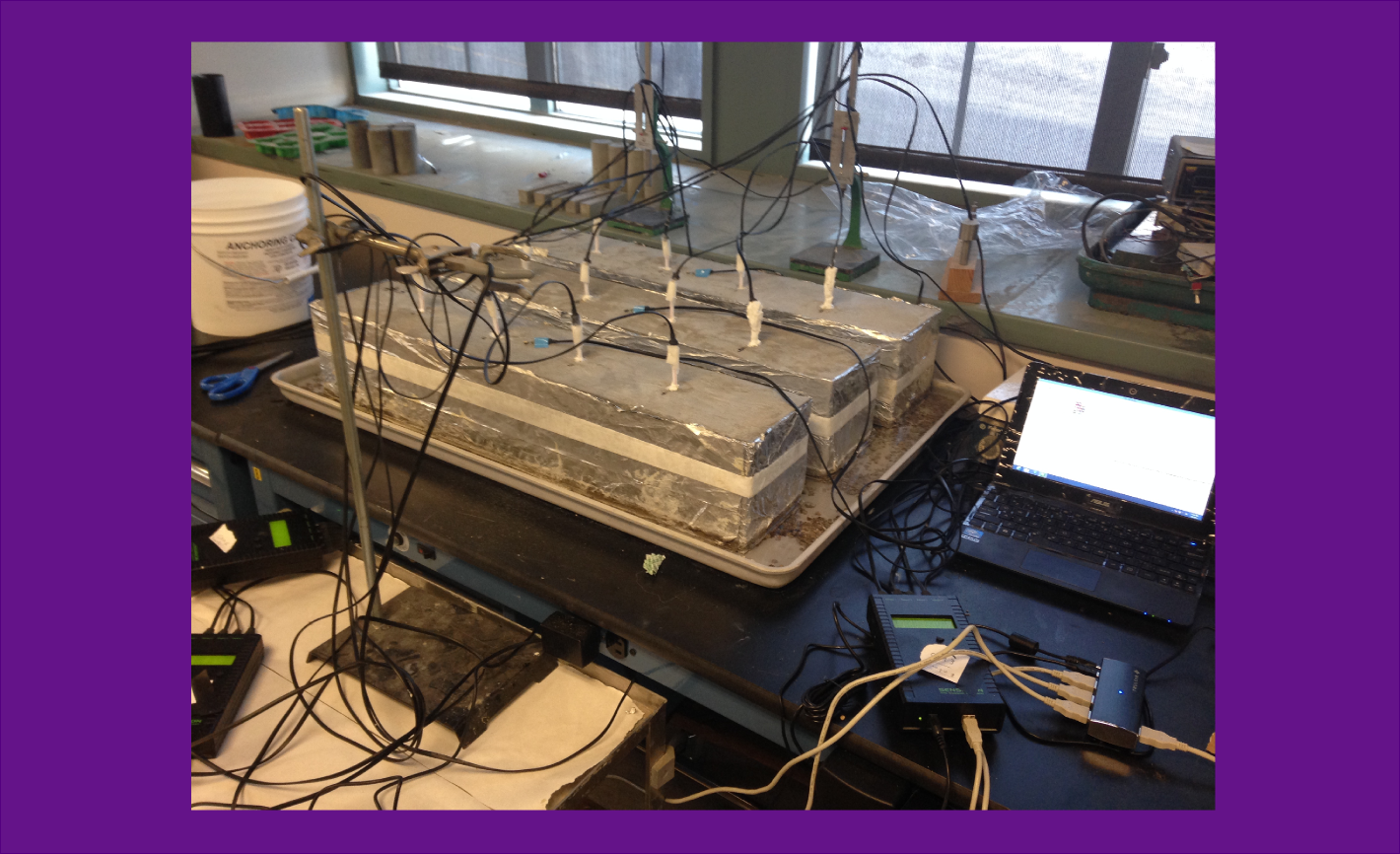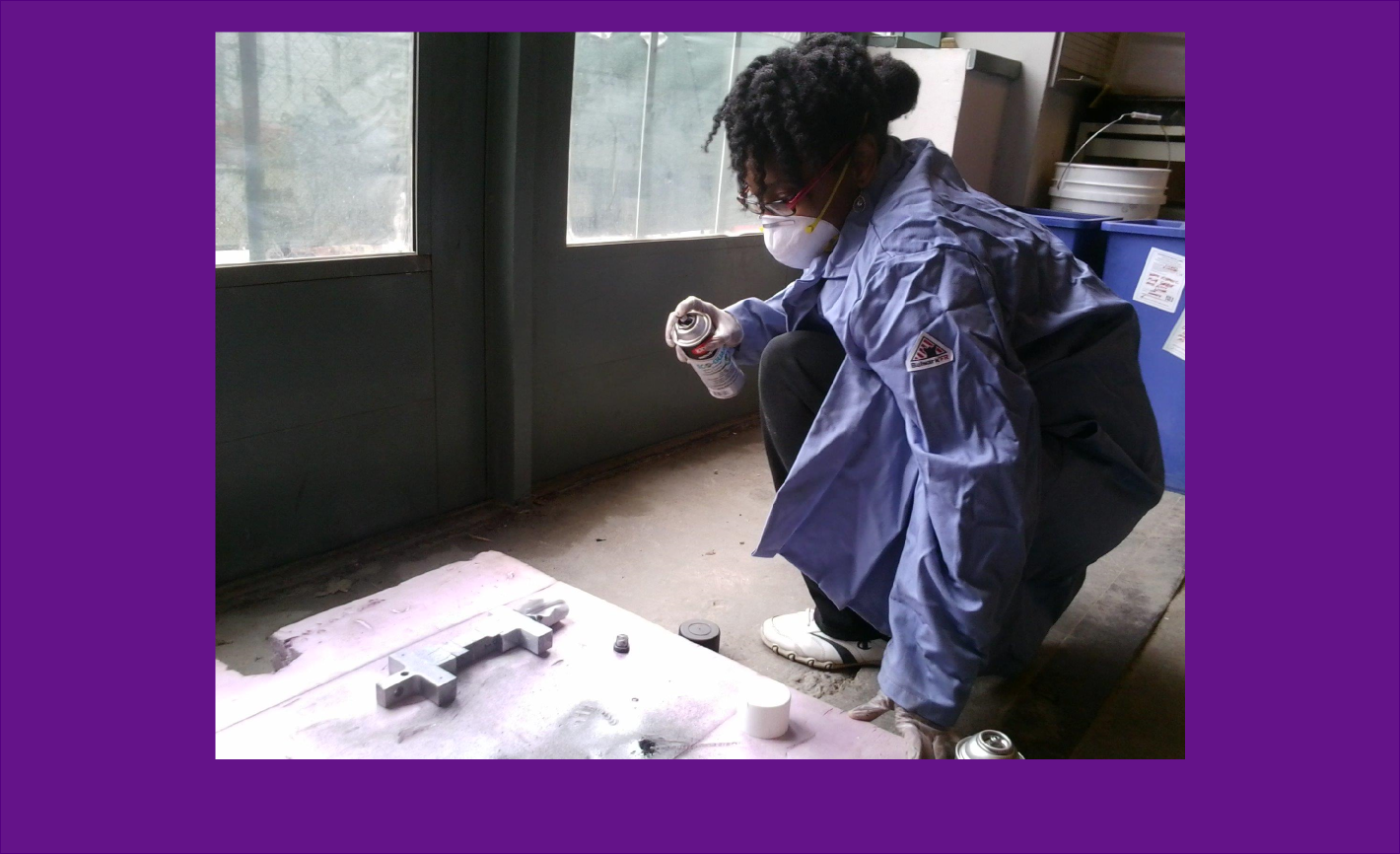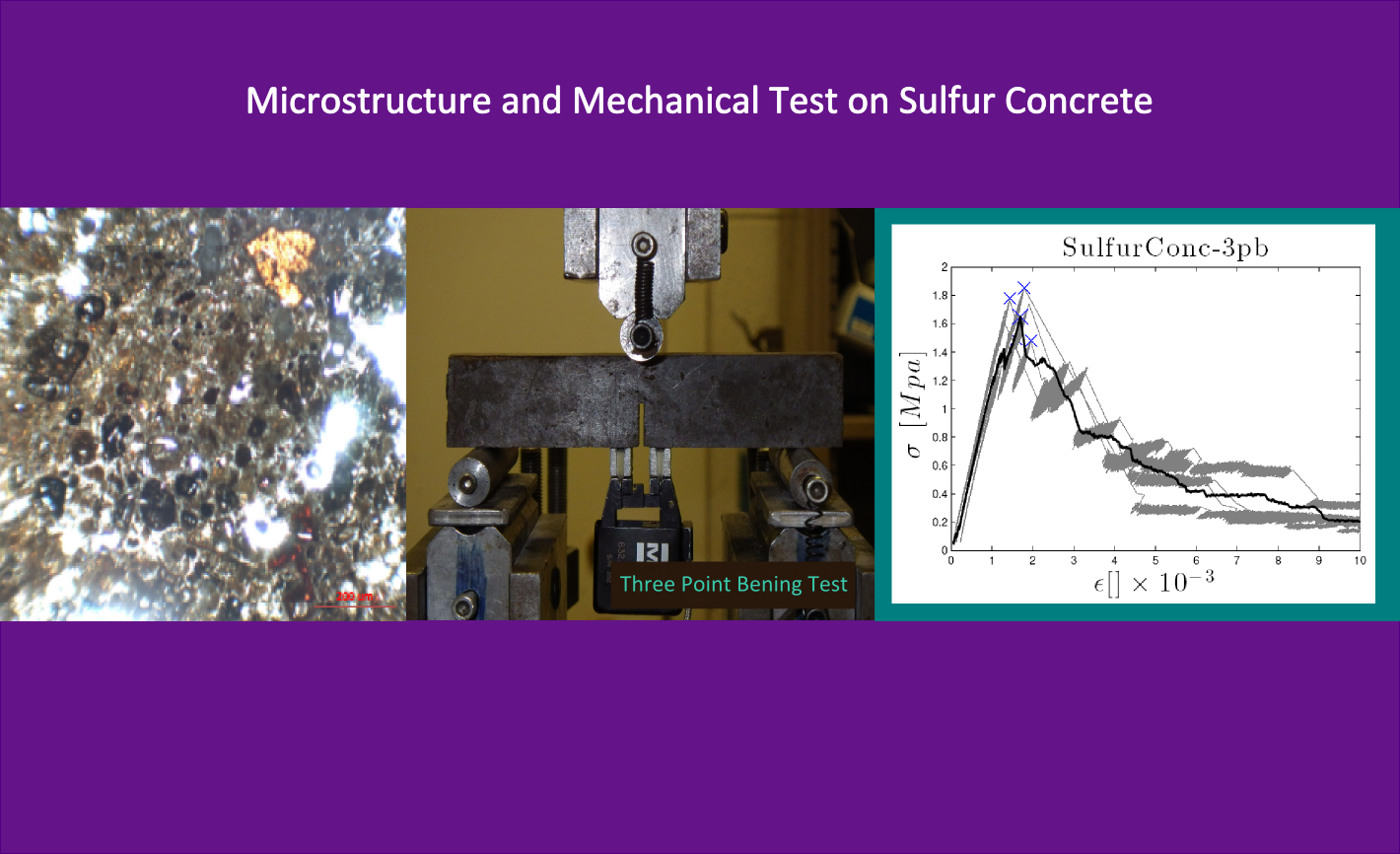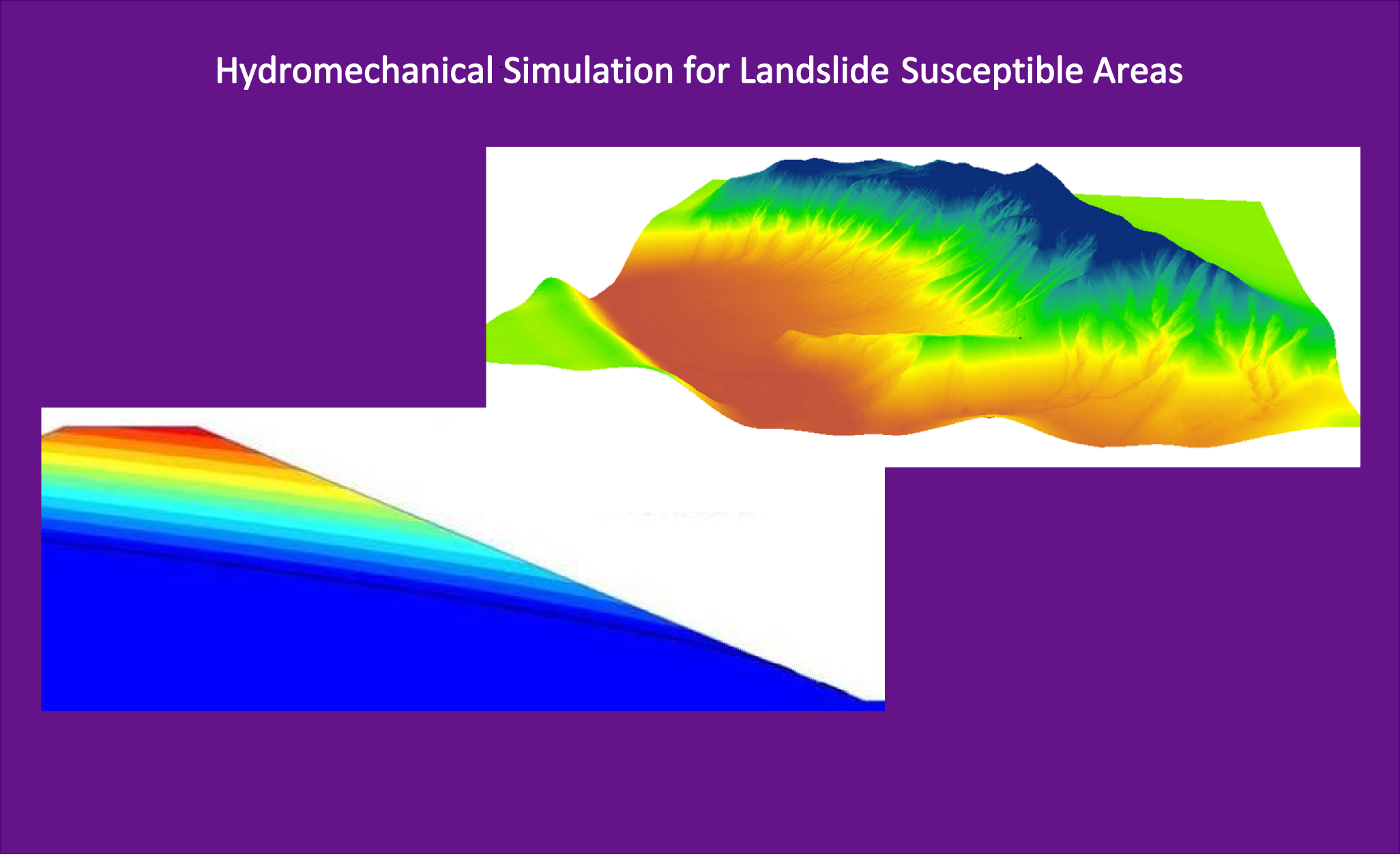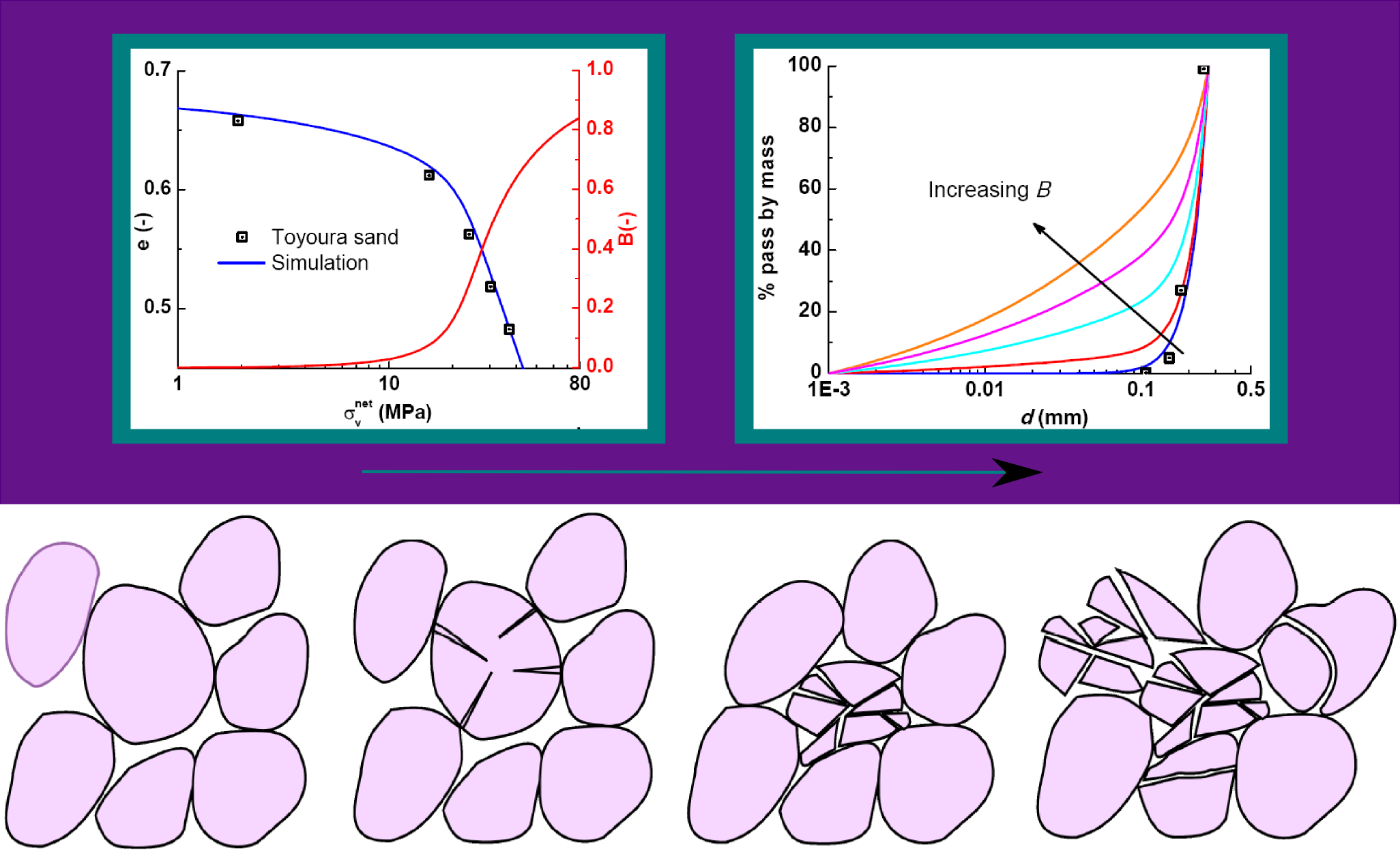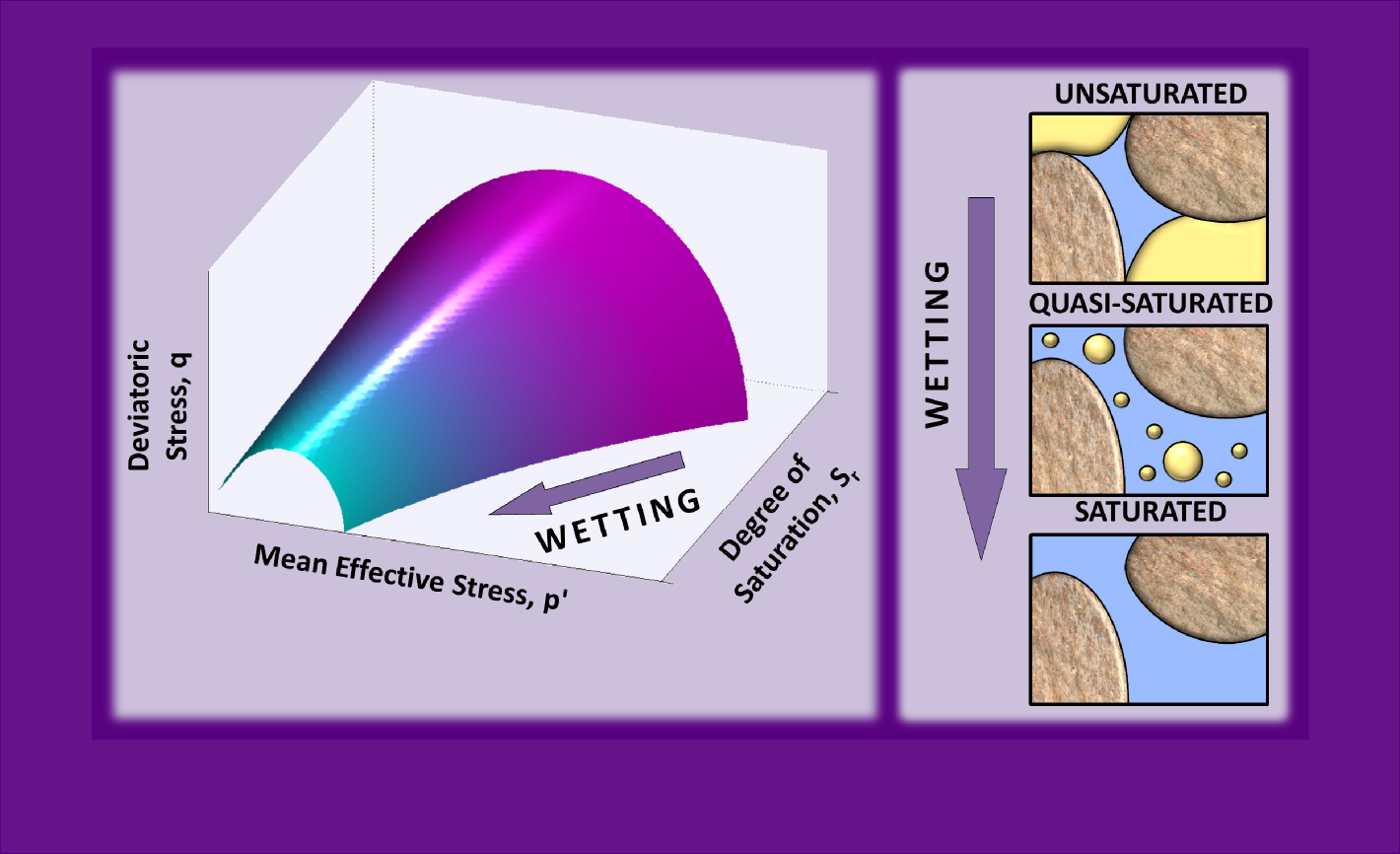LDPM SIMULATION
Crack Opening during Buckling of Plates
EXPERIMENTS
Making reinforced concrete beams for the self-healing project.
EXPERIMENTS AND LDPM SIMULATION
Behavior of Ultra-High-Performance-Concrete Cor-Tuf
EXPERIMENTS
Mechanical Tests on Shale Specimens
LDPM SIMULATION
LDPM Simulation using Coarse Graining
LDPM SIMULATION
LDPM Simulation of Cor-Tuf Projectile Penetration
MICROPLANE MODELING
Microplane Constitutive Modeling of Carbon-Polymer Laminates and Prediction of Car Crashworthiness (Mr. Kedar Kirane, Ms. Shiva Esna Ashari, Mr. Roozbeh Rezakhani, Dr. Marco Salviato) (PI: Prof Zdenek Bazant and Prof. Gianluca Cusatis)
ASR SIMULATION
LDPM Simulation of Alkali Silica Reaction (ASR) Deterioration of Concrete
NUMERICAL SIMULATION
Prediction of Localized Compaction Band Formation in Carbonate Rocks under Oedometric Condition
LDPM SIMULATION
Simulation of Reinforced Concrete Beams
FEM SIMULATION
Comminution of Solids due to Kinetic Energy of High-Rate Shear
EXPERIMENTS
Experimental Setup to Measure Internal Relative Humidity and Temperature in Self-Healing Concrete
EXPERIMENTS
Preparing samples for tension fber pull-out test on high performance concrete
LDPM SIMULATION
Multiscale Homogenization
EXPERIMENTS
Feasibility of Sulfur Concrete for Martian Constructions
MICROPLANE MODELING
Fracture and Size Effect on Strength of Plain Concrete Disks under Biaxial Flexure
HYDROMECHANICAL SIMULATION
Development of Physically-Based, Spatially Distributed Models for Rainfall-Induced Landslides
EXPERIMENTS AND SIMULATION
Unsaturated Breakage Mechanics
NUMERICAL AND ANALYTICAL METHOD
Stability of Multiphase Porous Media at Various Levels of Fluid Saturation

